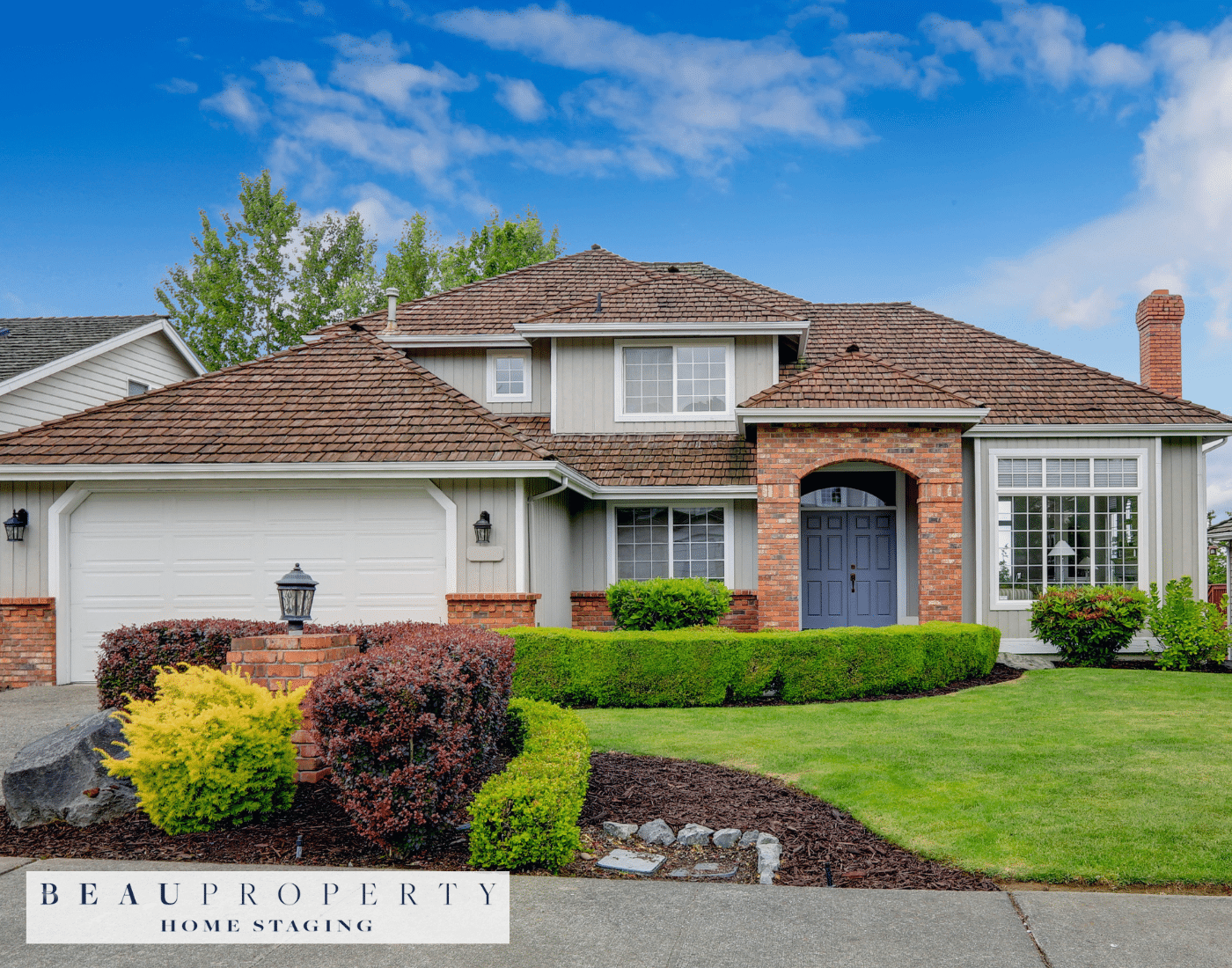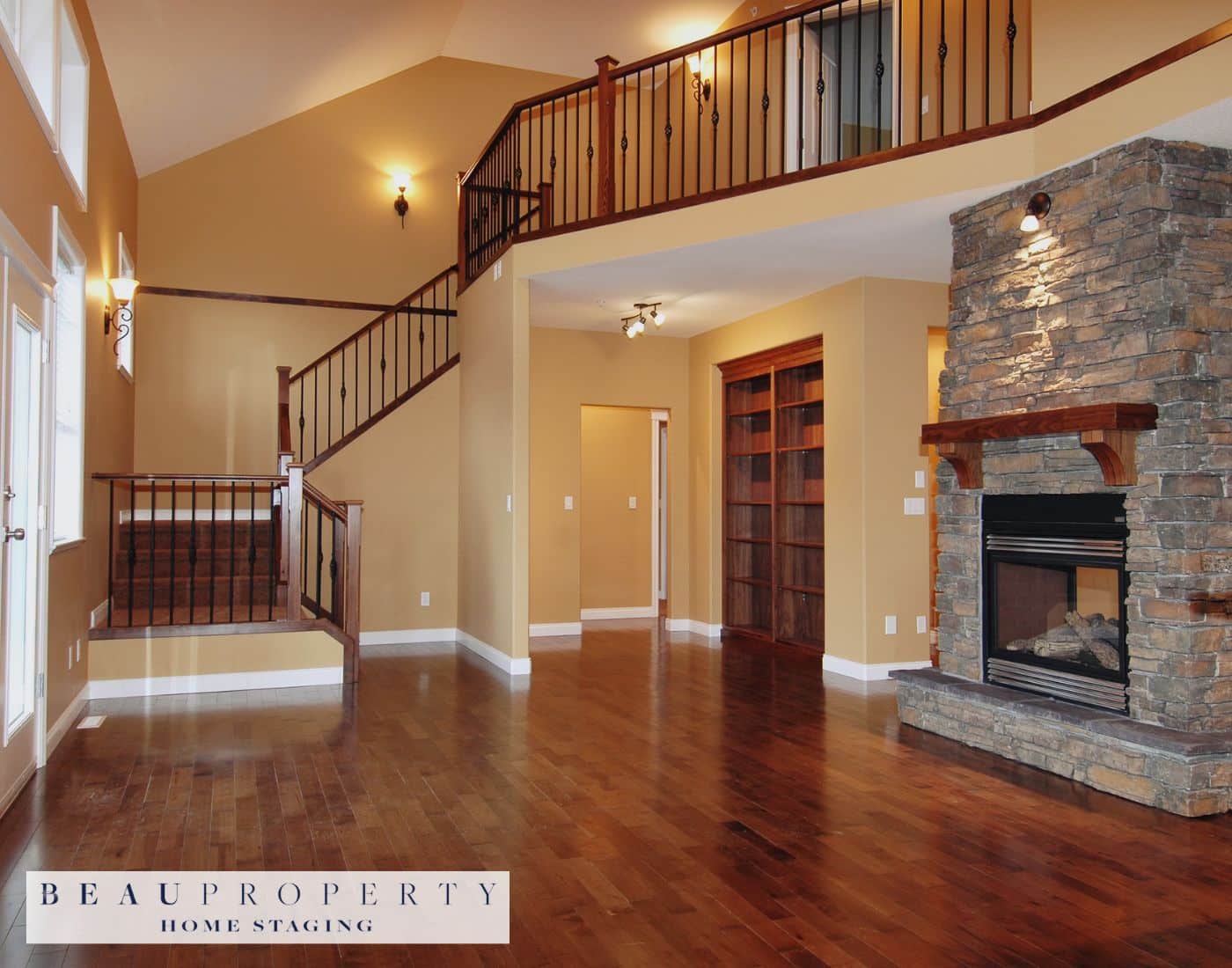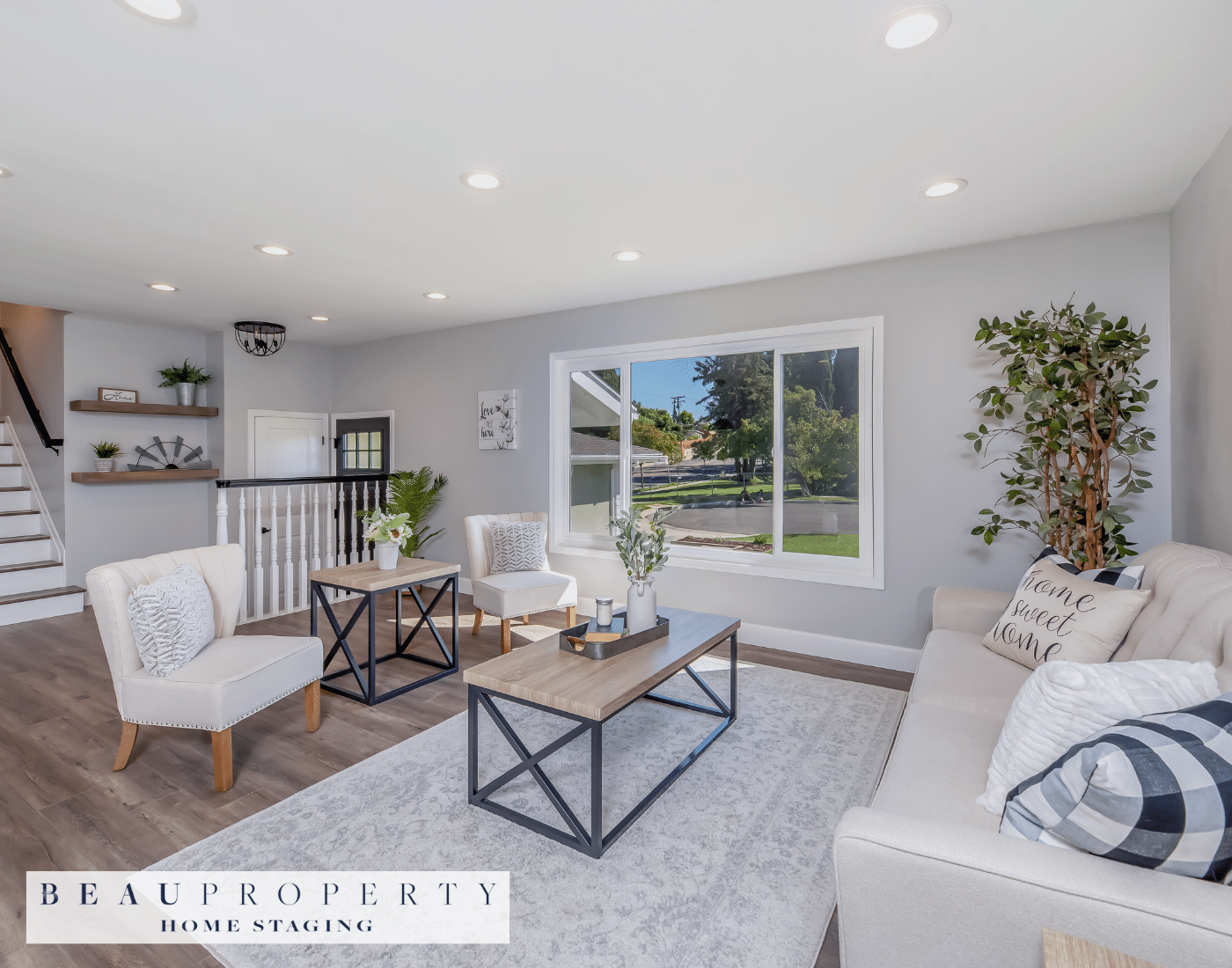Introduction
Home staging is the process of preparing and showcasing a home for sale in order to attract buyers. It involves enhancing the property’s curb appeal, decluttering and depersonalising interior spaces, optimising lighting, and strategically arranging furniture and decor. The goal is to highlight the best features of the home and help potential buyers envision themselves living there.
When done effectively, home staging can greatly increase the chances of selling a home quickly and for top dollar. According to research, staged homes can sell for up to 23% more on average compared to non-staged homes. Home staging also reduces the amount of time a home spends on the market.
Significance in Real Estate
In today’s competitive housing market, home staging has become a crucial strategy for sellers looking to stand out. With more homes on the market and buyers able to view listings online, a home’s first impression is more important than ever. Professional staging helps a property make a strong visual impact online to attract more buyers.
Goal of Home Staging
The ultimate goals of staging are to:
- Attract qualified, serious buyers
- Prompt buyers to take action and make an offer
- Increase the number of offers received
- Boost the final sale price
- Shorten time on the market
By showcasing a home’s strengths through staging, sellers can expect to sell faster and for more money. Staging aims to inspire emotional connections and make buyers fall in love with the property.
Declutter and Depersonalise
To help potential buyers envision themselves living in your home, it’s important to remove all personal possessions, including photos, memorabilia, and collections. Take the time to pack up items like framed family portraits, trophies from little league, and shelves of ceramic figurines. Store them off site or out of sight. This decluttering allows buyers to picture their own belongings in each room.
Eliminate Clutter in Every Room
In addition to depersonalising, you’ll want to thoroughly declutter each area of the home. Go through all closets, cabinets, drawers, pantries, and storage spaces. Remove anything you don’t use on a regular basis. This could include:
- Out-of-season clothing and accessories
- Old files and paperwork
- Knickknacks and decor items
- Games and puzzles
- Craft supplies
- Outdated electronics and small appliances
Take the time to donate, recycle, or properly dispose of anything you’ll no longer be keeping. For items you want to keep, rent storage space or ask a friend or family member if you can house boxes in their garage or basement during showings. The more you eliminate, the larger and cleaner your rooms will feel.
Deep Clean Every Inch
An immaculate, sparkling clean home communicates care and pride of ownership to buyers. Schedule a deep clean with a professional service, or thoroughly scrub the property top to bottom yourself. Pay special attention to:
- Interior windows, window tracks, screens, and sills
- Walls, baseboards, trim, vents, light fixtures, and ceilings – look for cobwebs and dust!
- Floors – sweep, mop, vacuum, shampoo carpets, polish hardwood
- Kitchen and bathrooms – sanitise sinks, counters, appliances, tubs, showers, toilets
A spotless home free from clutter showcases spaciousness and gives buyers peace of mind that the property has been well maintained.
Enhance the Curb Appeal
Landscaping can have a significant impact on a home’s curb appeal. Adding colourful flowers, trimming hedges, and maintaining lush green lawns creates an inviting first impression for potential buyers. Strategically placed trees, bushes, and shrubs also enhance privacy while providing shade and insulation from the sun.
Impact of Landscaping
Studies show that quality landscaping can increase a home’s value by up to 20%. The National Association of Realtors found that 99% of realtors believe curb appeal is vital for attracting buyers. Overgrown grass, weeds, and lack of maintenance can detract from that first impression.
Well-designed gardens with native, low maintenance plants are desirable. Paying attention to outdoor living areas like patios, pools, and BBQ spaces also matters. As one landscaper put it, “If that is done correctly and you are selling your property, people will fall in love.”
Curb Appeal Tips
- Maintain lush, green lawns or install realistic artificial turf
- Choose native, evergreen plants requiring little upkeep
- Review and complement neighbouring properties’ landscaping
- Strategically place trees, hedges and shrubs for privacy and shade
- Hire a designer to match your budget and needs
- Pay attention to outdoor living spaces like patios and pools
Properly enhancing your home’s curb appeal takes some investment, but the payoff can be significant. Just like renovating a kitchen increases resale value, quality landscaping can directly impact market price. Take steps to get your home’s exterior looking its best before listing.
The Front Door
An inviting, freshly painted front door also makes a strong first impression on home buyers. Choosing an eye-catching colour for the door creates curb appeal and a welcoming entrance. Touching up any chips or cracks in the paint ensures the door looks its best. Consider adding decorative touches like a wreath, potted plants or a welcome mat to complete the look.
When staging your home’s exterior, don’t underestimate the power of small details like a colourful front door to attract buyers’ attention right from the start.
Optimise Lighting
Maximising natural light is one of the most impactful and cost-effective home staging tips. Simply opening curtains, blinds, and shades can make rooms appear brighter, more spacious, and more welcoming to potential buyers. Take a walk through each room during the day and make sure window treatments are open to let that beautiful sunlight shine in.
While harnessing daylight is free, also make sure your artificial lighting is updated and enhanced. Replace any old, yellowed light bulbs with new bright white bulbs that provide a clean, crisp light. Target 100 watts of lighting per 50 square feet of space. Upgrade outdated fixtures as needed to ensure ample, attractive lighting in every room.
Open Window Treatments
Start by opening all curtains, blinds, and shades throughout the home. Natural light makes rooms feel airier and more spacious. Dust window panes, screens, tracks, and sills so the sunlight isn’t blocked by dirt and debris. Consider replacing heavy draperies with breezy sheers that still provide privacy but allow light to permeate. The cleaner and brighter the windows, the larger each room will feel.
Update Light Bulbs
Check each light fixture to make sure bright, white bulbs are installed. Replace any bulbs that have a yellowish hue. Warm white and soft white bulbs distort colours, while bright white bulbs showcase the true colours of paint, finishes, and furnishings. LED bulbs last the longest without needing frequent replacement. Group light sources together to avoid dark corners or shadows and highlight the best features of each room.
Paint and Repair
When preparing a home for sale, a fresh coat of paint can make all the difference. Choosing neutral and light paint colours appeals to the widest range of buyers by allowing them to envision how they would decorate the home. Soft blues, greys, tans, and off-whites are safe bets that feel soothing and welcoming without turning off potential buyers.
Advocate for Neutral Paint Colors
Sticking with neutral paint colours keeps the focus on the great features of the home rather than the decor. Neutral doesn’t have to mean boring though – warm greys, greiges, taupes, and linens breathe life into a space while still having mass appeal. Be sure to choose a zero-VOC paint that is durable, long-lasting, and environmentally friendly.
Promptly Fix Minor Repairs
Before listing your home, walk through each room with a critical eye to identify any flaws or damage. Fix minor issues like cracked caulking, holes in walls, sticky doors or windows, loose door knobs, and squeaky floorboards. Making these repairs shows buyers the home has been well-cared for and makes for a smoother selling process down the line.
In addition to repairs, consider upgrades like new lighting fixtures, faucets, and cabinet hardware which modernise a home without a huge investment. Little touches like this can really maximise the value of your property in the eyes of buyers.
With a fresh coat of appealing paint and minor fixes addressed, your home will shine and catch the eye of buyers looking for move-in ready properties.
Rearrange Furniture
When rearranging furniture, it’s important to consider the purpose and flow of each room. Start by identifying the focal point, whether it’s a fireplace, window with a nice view, or wall you want to highlight. Arrange seating to face the focal point when possible. Angle furniture to create an open flow for walking through the space. Avoid lining all furniture against the walls, which can make a room feel closed off.
Highlight Purpose and Appeal
In living rooms, angle the sofa towards the focal point and pull chairs out a bit to promote conversation. Place end tables within reach for convenience. In a dining room, position the table to allow ample walking room when chairs are pulled out. Angle buffets or hutches to show them off while maintaining flow. For bedrooms, pull nightstands out from walls so they are readily accessible from the bed. In home offices, angle the desk towards the doorway slightly so the occupant can greet visitors easily.
Open Up Space
Cluttered rooms with too much furniture feel smaller and less inviting. As a rule of thumb, leave at least 2-3 feet between furniture pieces and walking paths. For open floor plans, define spaces with area rugs and lighting instead of bulky room dividers. Take inventory of furniture pieces and remove excess accent tables, chairs, hutches and anything else crowding the area. Sell or donate unwanted items. Multi-purpose furniture, like storage ottomans and fold-out desk units help maximise space efficiency.
By mindfully arranging furniture and removing clutter, you can transform the entire feel of a home to be more spacious, purposeful and visually appealing.
Stage Key Rooms
When staging a home, the living room, kitchen, master bedroom, and bathrooms are often considered the most important rooms to focus on. These spaces make a strong first impression and allow potential buyers to envision themselves living in the home.
Living Room
The living room is usually one of the first rooms buyers see when touring a home. To stage an inviting living room:
- Arrange furniture to create a natural flow and plenty of walking space
- Incorporate stylish but neutral accessories like throw pillows, blankets, and artwork
- Style the coffee table with books, flowers or other simple decor
- Make sure lighting is sufficient throughout the space
Kitchen
The kitchen is considered the “heart of the home” and can greatly sway a buyer’s opinion. Useful staging tips include:
- Clear countertops completely or style them sparingly
- Display a bowl of fresh fruit to add warmth
- Organise items inside cabinets to show ample storage space
- Ensure all appliances and fixtures are clean and in working order
Master Bedroom
Staging the master bedroom might involve:
- Using neutral bedding and minimal accessories to allow the buyer’s imagination to fill in the blanks
- Removing clutter from closets and dresser drawers
- Letting in ample natural light with curtains and blinds open
- Creating a peaceful, relaxing atmosphere with candles, plants or artwork
Bathrooms
For bathrooms, important staging steps consist of:
- Thoroughly cleaning all surfaces and fixtures
- Storing away personal items and clutter
- Laying out neutral towels and accessories
- Checking for any maintenance issues with plumbing, ventilation, etc.
Paying special attention to optimally staging these key areas can go a long way in attracting qualified buyers. The overall goal is to showcase the functionality and potential of the home in its best possible light.
Accessorise
Artwork, mirrors, and plants can add character and freshness to rooms without overwhelming the space. Strategically placing these accessories enhances the overall ambiance and appeal of a home.
Artwork Sets the Tone
Artwork introduces colour, texture, and personality into a room. Neutral-toned artwork with simple frames allows buyers to imagine decorating the walls with their own style later. Landscape paintings or photographs bring the calming feeling of nature indoors. Display artwork at eye level for maximum impact.
Mirrors Brighten and Expand
Mirrors reflect light to make spaces feel more open and airy. Hang a large mirror opposite a window to amplify natural light. Position mirrors across from each other to create the illusion of extra space. Place mirrors near dark corners or small rooms to visually expand the area.
Greenery Signals Life
Live plants oxygenate the air while adding pops of green. Potted trees in corners create a welcoming entryway. Fresh flower arrangements on tables provide seasonal beauty. Succulents and air plants displayed in hanging planters or on shelves add low-maintenance greenery. Place plants in rooms with ample natural light.
By artfully incorporating artwork, mirrors, and plants throughout a home, sellers create a warm, inviting atmosphere that appeals to buyers. These simple touches enhance curb appeal and showcase properties at their best.
Address Flooring
Clean, polished floors can make a huge difference in the perceived value and appeal of a home. Scrubbing carpets and buffing hardwood floors should be a priority when preparing a property to go on the market.
Deep Clean Carpets
Stained or dingy carpet can be a major turnoff for buyers. Invest time in shampooing carpets and rugs or consider professional steam cleaning services. Freshly cleaned carpets look newer, feel softer underfoot, and contribute to a well-cared for ambiance.
Refinish Hardwoods
If you have hardwood floors, refinishing them can work wonders. Sanding down surfaces, filling cracks, and applying new layers of finish makes floors gleam. The end result is smooth floors that look practically brand new. Be sure to match new finish layers to the existing stain colour.
Replace Damaged Flooring
For floors that are beyond refinishing due to water damage, pet stains, or other issues, replacement may be necessary. This is especially important in high traffic areas like hallways and kitchens. New vinyl plank flooring offers durability and style at a reasonable price point.
Show Off Features
Beautiful floors can be a highly desirable feature for home buyers. If you have oak hardwoods, slate, or other eye-catching materials, stage the space to draw attention to these details. Clearing away furniture and rugs to expose the flooring allows it to shine.
Final Touches
Creating a pleasant and welcoming environment for potential buyers is key to selling your home quickly. Neutralising odours throughout the home is an important final touch when staging. Baking cinnamon apples, using essential oils, and taking out the trash are simple yet effective ways to tackle odours. It’s also wise to wipe kitchen sinks and run lemons through the garbage disposal to eliminate stubborn smells.
Key Tips Summary
When prepping your home for sale, focus on highlighting its best features through staging. Key tips covered in this blog post include:
- Decluttering to create a spacious atmosphere
- Depersonalising rooms so buyers can envision themselves there
- Enhancing curb appeal with fresh landscaping
- Maximising natural light and upgrading fixtures
- Applying neutral paint colours for wider appeal
- Rearranging furniture to showcase room purpose
- Strategically placing accessories to improve ambiance
Implementing these impactful touches makes your home more enticing to prospective buyers. An attractive, welcoming atmosphere motivates buyers to make compelling offers.
Conclusion
Home staging is an essential step in preparing a home for sale. As outlined in this blog post, techniques like decluttering, enhancing curb appeal, optimising lighting, renovating, rearranging furniture, and accessorising can significantly increase a property’s visual appeal. Implementing even a few inexpensive staging tips creates an inviting atmosphere that appeals to buyers’ emotions and helps them envision the home as their own.
An effectively staged home simply shows better, especially online where most buyers first encounter properties nowadays. This draws more qualified buyers to view the home in person. With more interest comes more offers, often above the asking price for a staged home. A few reasonable investments in staging therefore quickly pay for themselves in the form of a faster sale for top dollar.
So take the time to thoughtfully stage your home before listing it on the market. The effort pays dividends in the end through a quicker and more lucrative sale. Use the tips provided here as a starting point to showcase your property’s finest features and create that coveted emotional connection with potential buyers.





